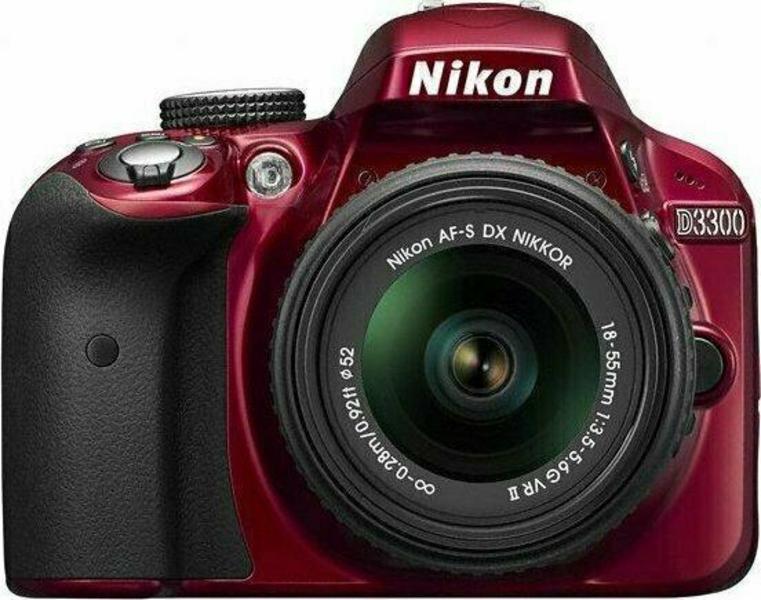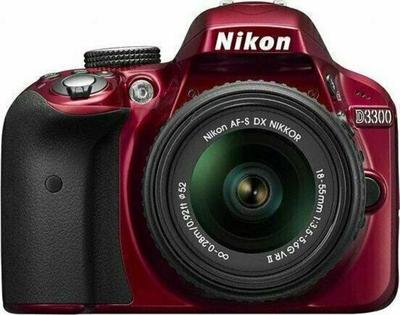











| Słaby | Przeciętny | Dobry | Świetny | |
|---|---|---|---|---|
3 in Najlepsza: Sony Cyber-shot DSC-W710 Rozmiar ekranu: 6,7 in | ||||
25600 Najlepsza: Pentax KP ISO maks: 819200 | ||||
24 Mpx Najlepsza: Hasselblad H6D-100c Efektywne piksele: 100 Mpx | ||||
6000 x 4000 px Najlepsza: Leica M11 Maksymalna rozdzielczość: 9528 x 6328 px | ||||





| Typ czujnika | CMOS |
|---|---|
| Format czujnika obrazu | Advanced Photo System type-C |
| Rozmiar czujnika | 23.5 mm |
| Fotodetektorowe czujniki | 25.0 Mpx |
| Efektywne piksele | 24.0 Mpx |
| Współczynnik obrazu w: h | 3:2 |
| Maksymalna rozdzielczość | 6000 x 4000 px |
| Inne uchwały |
|
| Edytor | Expeed 4 |
| Mocowanie obiektywu | Nikon F |
|---|---|
| Zoom optyczny | 5.8 x |
| Powiększenie (współczynnik przycięcia) | 1.5 x |
| Minimalna apertura | 22 |
| Maksymalny otwór przysłony | 2.8 |
| Wspomaganie AF (światło wspomagające) | Lampa |
| Regulacja ostrości | Automatyczny |
| Kontrastowy autofokus | Tak |
| Regulacja kontrastu | Tak |
| Regulacja jasności | Tak |
| Autofokus w trybie nagrywania | Tak |
| Mnożnik ogniskowej | 1.5x |
| Autofocus |
|
| Blokada automatycznego ustawiania ostrości (AF) | Tak |
| Ręczne ustawianie ostrości | Tak |
| Wybór punktów autofokusa (AF) | Automatyczny |
| Światło wspomagające autofokus (AF) | Tak |
| Liczba punktów skupienia | 11 |
| Maksymalna liczba punktów AF (w tym asystenta) | 11 |
| Stabilizator obrazu | Tylko na bazie obiektywu |
| Średnica filtra | 52.0 mm |
| Autofocus z detekcją fazową | Tak |
| Liczba punktów AF (kontrast) | 11 |
| Tryby fotografowania | Scena |
|---|---|
| Typ migawki | Elektroniczny |
| Minimalny czas otwarcia migawki | 30.0 s |
| Maksymalny czas otwarcia migawki | 1.0 s |
| Priorytet migawki | Tak |
| Priorytet przysłony | Tak |
| Tryb ręcznej ekspozycji | Tak |
| Kompensacja ekspozycji plus | 5 |
| Kompensacja ekspozycji minus | -5 |
| Kroki kompensacyjne Expousure | 1/3 |
| Automatyczna blokada ekspozycji | Tak |
| Ciągłe wyzwalanie migawki | Tak |
| Opóźnienie samowyzwalacza |
|
| Histogram | Tak |
| Bracketing WB | Nie |
| Tryby tematów / scen | Tak |
| Szybkość synchronizacji lampy błyskowej | 1/200s |
| Wbudowana lampa błyskowa | Tak |
| Zasięg błysku | 12.0 m |
| Tryby lampy błyskowej |
|
| Zewnętrzne połączenie flash | Gorący but |
| System pomiaru błysku | i-TTL |
| Zewnętrzna lampa błyskowa | Tak |
| Ciągły napęd | 5.0 fps |
| Tryby scen |
|
| Samowyzwalacz | Tak |
| Tryby pomiaru |
|
| Ustawienia ręczne | Tak |
| Opcje samowyzwalacza |
|
| Szybkość (JPEG) | 5.0 fps |
| Prędkość (RAW) | 5.0 fps |
| Wbudowany mikrofon | Tak |
|---|---|
| Typ mikrofonu | Mono |
| Rodzaj głośnika | Mono |
| Nagrywanie głosu | Tak |
| System audio | Mono |
| Obsługiwane formaty plików audio | PCM |
| Waga | 460.0 g |
|---|---|
| Szerokość | 124.0 mm |
| Wysokość | 75.5 mm |
| Głębokość | 98.0 mm |
| Rodzaj źródła zasilania |
|
|---|---|
| Żywotność baterii (CIPA) | 700 |
| Technologia akumulatorowa | Litowo-jonowy |
| Pojemność baterii | 1230.0 mAh |
| Napięcie baterii | 7.2 V |
| Liczba obsługiwanych baterii | 1 |
| W zestawie zasilacz sieciowy | Nie |
| Nagrywanie poklatkowe | Nie |
|---|---|
| GPS | Nie |
| Czujnik orientacji | Tak |
| Kalendarz | Tak |
| Certyfikat Energy Star | Nie |
| Obsługa języków |
|
| Obsługiwane mocowanie do statywu | Tak |
| Języki menu ekranowego (OSD) |
|
| Tryby edycji obrazu |
|
| ISO |
|
|---|---|
| ISO minimum | 100 |
| ISO maks | 25600 |
| Maksymalne ISO (boost) | 25600 |
| Maksymalna rozdzielczość obrazu | 6000 x 4000 px |
| Ustawienia balansu bieli | 12 |
| Tryby balansu bieli |
|
| Niestandardowy balans bieli | Tak |
| Obsługiwane formaty plików graficznych |
|
| Efekty fotograficzne | Żywy |
| Stabilizator obrazu | Nie |
| Rodzaj stabilizacji obrazu | Nie |
| Obsługiwane proporcje obrazu | 3:2 |
| Nieskompresowany format | RAW |
| Obsługa AEB / HDR | Nie |
| Rozmiar ekranu | 3.0 in |
|---|---|
| Odchylany wyświetlacz LCD | Nie |
| Technologia ekranu | LCD |
| Kropki na ekranie | 921000 |
| Ekran dotykowy | Nie |
| Pole widzenia | 100.0 % |
| Na żywo | Tak |
| Wizjer | Optyczny |
| Zasięg wizjera | 95.0 % |
| Powiększenie wizjera | 0.85 x |
| Korekcja dioptrii | Tak |
| Regulacja dioptrii (DD) | -1.7 - 0.5 |
| Ulga dla oka | 18.0 mm |
| Oddzielne wyświetlanie informacji | Nie |
| Rozkładany ekran | Nie |
| Maksymalna rozdzielczość | 1920 x 1080 px |
|---|---|
| Nagrywanie wideo | Tak |
| Rozdzielczość nagrywania |
|
| Typ HD | Full HD |
| Obsługiwane formaty plików wideo |
|
| System formatu sygnału analogowego |
|
| Odtwarzanie z aparatu |
|
| Maksymalna rozdzielczość (najwyższa częstotliwość klatek) | 1920 x 1080 |
| Maksymalna liczba klatek na sekundę (najwyższa rozdzielczość) | 60.0 fps |
| Maksymalna liczba klatek na sekundę (niezależnie od rozdzielczości) | 60.0 fps |
| Prędkość klatek Motion JPEG | 60.0 fps |
| Typ nadwozia | Lustrzanka |
|---|---|
| Materiał korpusu | Plastikowy |
| Kolor produktu |
|
| System przeciwpyłowy | Tak |
| Uszczelniony | Nie |
| Kompatybilne karty pamięci |
|
|---|---|
| Gniazda pamięci | 1 |
| Rodzaje przechowywania |
|
| System plików aparatu | RAW |
| HDMI | Tak |
|---|---|
| Rodzaj złącza HDMI | Mini |
| Port USB | Tak |
| Rodzaj złącza USB | Micro USB |
| Wersja USB | 2.0 |
| Port mikrofonu | Tak |
| Bezprzewodowy | Opcjonalny |
| Pilot | Tak |
| PictBridge | Tak |
| NFC | Nie |
| Sieć bezprzewodowa (Wi-Fi) | Nie |
| Bluetooth | Nie |
| Firewire | Nie |

The Nikon D3300 is a brand new entry-level digital SLR camera with a 24 megapixel sensor, no optical low-pass filter, 50/60p Full HD movies, a 3 inch LCD screen, 5fps burst shooting and an ISO range of 100-25600. Read our detailed Nikon D3300 review, complete with sample JPEG and raw photos, test shots, videos and more...
Outstanding photo and video quality, nippy performance and no significant drawbacks
An inexpensive Nikon digital SLR camera that's great for beginners
There is a temptation amongst those of us that shoot with and test DSLRs for a living to be more than a little dismissive about entry-level cameras like the Nikon D3000. However, first-time DSLR buyers are enormously important to camera manufacturers, and the competition amongst them for a share of the entry-level market is intense. The D60, which is replaced by the D3000, was Nikon's best-selling DLSR, and it is the success of products like this that drives the development of everything from low-end Coolpix models to the recently announced professional level D3s. But the success of entry-level DSLRs isn't just good news for camera manufacturers - today's 'low end' offerings are highly specified, powerful tools, which - had they been released a few years ago - would have commanded much higher prices than they do today. With the 6 million pixel D40, released in 2006, Nikon made a decision to create a completely different type of DSLR to its previous low-end offerings. The D40, and the D40x and D60 that followed it, was designed specifically to be user-friendly, as well as merely wallet-friendly. Gone were the 'traditional' top-plate mounted LCD screen and many of the external control points, in favor of a stripped-down, minimalist design and a largely screen-driven interface. The D3000 continues in this mold, but if anything, is even easier to get to grips with thanks to the introduction of a new 'guide' mode. The D3000 shares the same 10 million pixel CCD sensor as the D60, and almost exactly the same body and design, but this camera is more than a cosmetic revamp of the older model. Crucially, the D60's adequate but uninspiring 3-point AF system is gone, replaced by the same 11-point system as found in the D90. This venerable AF module (the Multi-cam 1000, if you were curious) has impressive provenance, and was originally developed for the professional-level Nikon D200. Some photographers may be disappointed, however, by the lack of live view and video modes in the D3000, which makes it the 'odd one out' compared to many of its entry-level peers.
If you’ve always hungered for a DSLR and more importantly, a Nikon DSLR, but never had ‘the ready’ to fill your ambition … The Nikon D3000 DSLRcould be your opportunity. It’s hard to quantify the allure of the breed but undeniable is the bloodline, the technical excellence and innovative achievements of Nikon cameras and lenses. […]
Nikon's latest entry-level DSLR adds an intuitive Guide mode to provide hassle-free photography for novice users.The D3000 slots into Nikon's DLSR line-up below the D5000, replacing the D60 and D40x at the entry level position. Although not the smallest in its class, the D3000 is nonetheless compact as befits its target market. Offering 10.2 megapixels of effective resolution, it provides lots of features that will appeal to first-time DSLR buyers. However, it doesn't support live view shooting or video recording.
Nikon D3000
Nikon’s 10.2-megapixel D3000 is their latest entry-level DSLR. It’s aimed at consumers stepping up from a point-and-shoot who want a camera that’s easy to learn but not lacking in sophisticated features.
Nikon D3000 review, find out how the D3000 stacks up against the competition in our real-world review with in-depth image quality comparisons.
Nikon D3000 Review: Features, Suitability and Capability
The Nikon D3000 is an entry-level 10.2-megapixel DSLR. It follows closely with the feature set and functionality of the Nikon D40, D40x and D60 cameras. However, the D3000 is focused even more di…
Nikon D3000 DSLR digital camera first look preview
Here are the best DSLR cameras selling for less than $1,500, including top picks for beginners, hobbyists and those who want to shoot video.
The Nikon D3000 is a new digital SLR camera for the masses, with simplified handling and guided help that offers a gentle introduction to the world of SLR photography. The D3000 is designed to improve your photos, with an interactive Intelligent Guide mode holding your hand on the road to that perfect picture. Other standout features include a large 3 inch LCD screen, sensible 10 megapixel sensor, 11-point autofocus system and 3fps continuous shooting. Available for £429.99 / €522.00 body-only or £499.99 / €607.00 / $599.95 with the 18-55mm VR kit lens, Gavin Stoker discovers if the Nikon D3000 is the ultimate camera for DSLR beginners.
Nikon D3300 review and Unboxing. The D3300 Rivals vs D5300 , D5200, D3200 vs Canon t5i , EOS rebel t3i and 1200D t5. The Nikon's D3300 features, price.

















